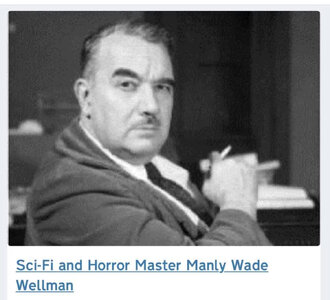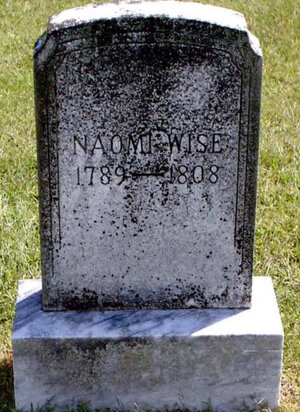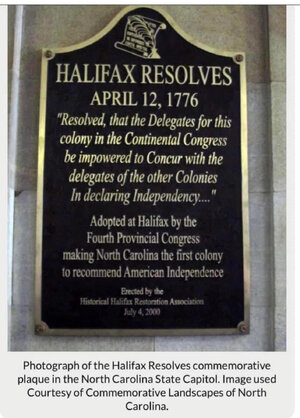donbosco
Inconceivable Member
- Messages
- 3,661
Follow along with the video below to see how to install our site as a web app on your home screen.
Note: This feature may not be available in some browsers.

Great neighborhood I raised my kids mostly in Heritgage Hills out that way
82 Dogwood Acres Drive, Chapel Hill. That was the address where he lived and #OTD in 1986, Manly Wade Wellman died. Read on at this link: Sci-Fi and Horror Master Manly Wade Wellman
I once lived on Dogwood Acres Drive. Still have friends that live along there today.
Yorktown. Cornwallis etc.........@mpaer — am I remembering that the streets there were all named after Revolutionary War battles?
Brandywine, Yorktown, Saratoga trail, Concord, Bennington.....................No cornwallis lol
Do they pronounce it the Yankee way or the right way? "conquered" or CON-CORD?Brandywine, Yorktown, Saratoga trail, Concord, Bennington.....................No cornwallis lol






 www.facebook.com
www.facebook.com
Hey!
On April 11, 1960 Time Magazine’s cover featured Bowman Gray Jr., the Chairman of the Board of R.J. Reynolds Tobacco Company.
The feature story included the following: “To pick its mixtures, Reynolds relies on a tasting panel of 250 employees (from top executives to stenographers) who regularly test its new products. But [Chairman of R.J. Reynolds Tobacco Company, Bowman] Gray ”who began smoking when he was nine” is the man with the golden tongue, gives the final O.K. Says he: “I do believe that if a cigarette appeals to me — I’m a pretty average fella — it might appeal to the population.” This week Gray, who smokes as many as four packs of Winstons a day (with an occasional Salem), was also puffing away at cigarettes from chalky white, unmarked testing packs. Through his mouth and into his windpipe he rolled the smoke with all the sober concentration of a winetaster. In the blank packs were cigarettes being tested as possible additions to half a dozen new brands that Reynolds already has on hand to put on the market when the time is ripe.” ~ Time Magazine, April 11, 1960
From NCPedia.org: “Under Gray's leadership the Reynolds company expanded its sales, produced a number of new brands of tobacco products, and introduced filter-tipped cigarettes. During this time a Reynolds manufacture, Camel cigarettes, was reported to have been the nation's largest selling cigarette. His encouragement of research led to the establishment of a Product Development Center in 1959; the firm also contributed to cancer research. Diversification became a policy of the company under Gray's direction and transportation, food products, and packaging firms were acquired. In one of the most extensive such actions taken by a southern industry, R. J. Reynolds in 1961–62 totally integrated all of its employees. Also during Gray's administration, the company expanded employee benefits in the areas of health care, retirement, education, profit sharing, and other areas.” Gray, Bowman, Jr..
Gray also died on April 11, 1969. His death certificate lists “congestive heart failure” as the cause. He was 62.
Every time I read the Halifax Resolves; it just makes me mad the NC Flag promotes the myth of the Mecklenburg Declaration of Independence. The Mecklenburg Resolves are dated May 31, 1775 and actually existed on that date. Couple of thoughts:
North Carolina FIRST IN FREEDOM — April 12, 1776 appears on the NC State Flag (words and numbers on flags have always struck me as somewhat wrong-headed but that is an aside). The "Halifax Resolves" noted below are the reason for that banner placement. Way back in 1975 our license plates began to sport the phrase "First in Freedom" in honor of that resolution and the nation’s impending Bi-Centennial. I have always been a license plate reader — often trying to create words or phrases from the letter sequences as a ‘mind game.’ I remember that when I lived in the Boone area many plates began with the three letters, “BRR.” In my game that became, naturally, Blowing Rock Road! I also remember that in 1975 in protest (since, of course, NC did not freely abolish slavery but clung to it with the other confederate states - the very height of UN -Freedom - but rather had to be forced to end that antithetical institution) some North Carolinians placed Duct Tape over that phrase on their plates. I don't rightly remember how that protest turned out but evidently the "First in Freedom" promoters won the day some forty years later when the option of either “First In Flight” or “First In Freedom” became available.
In reference to our #OnThisDay, the Halifax Resolves have long intrigued me because they seemed so “out of North Carolina character.” After all, we’ve not often been at the forefront of radical moves, instead historically taking a “watch what the other guy does” sort of approach. In regard to Independence, while the Halifax Resolves came early in the deliberations toward breaking with Great Britain, when push came to shove, we were the 12th of the 13 colonies to actually separate. There is even a kind of tentativeness to the Resolves in my opinion as ultimately that agreement only gave North Carolina’s representatives to the Continental Congress permission to agree, it did not order them to do such a thing — Read for yourself and you be the judge: “Resolved, that the delegates for this colony in the Continental Congress be empowered to concur with the delegates of the other Colonies in declaring independency, and forming foreign alliances, reserving to this Colony the sole and exclusive rights of forming a Constitution and laws for this Colony, and of appointing delegates from time to time (under the direction of the general representation thereof), to meet the delegates of the other Colonies for such purposes as shall be hereafter pointed out.” (Go to page 512 of the document itself: https://docsouth.unc.edu/csr/index.html/document/csr10-0250 ).
#OTD (April 12) 1776 The Fourth Provincial Congress of North Carolina unanimously approved a resolution to move for Independence from England. This was the first such intention put to paper. Named for the site of the meeting, this declaration is known as The Halifax Resolves. Halifax Day Celebrates Embrace of Independence
(Apologies - was driving all day yesterday and missed it - day late)
